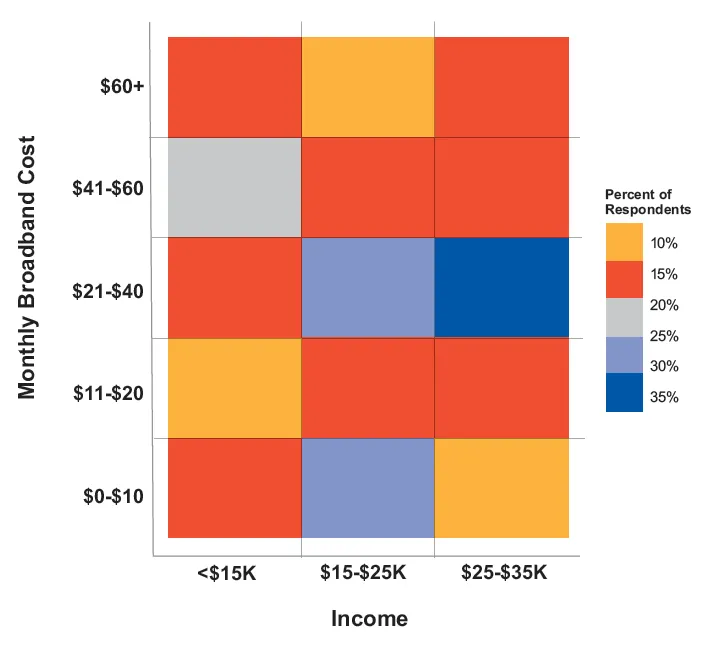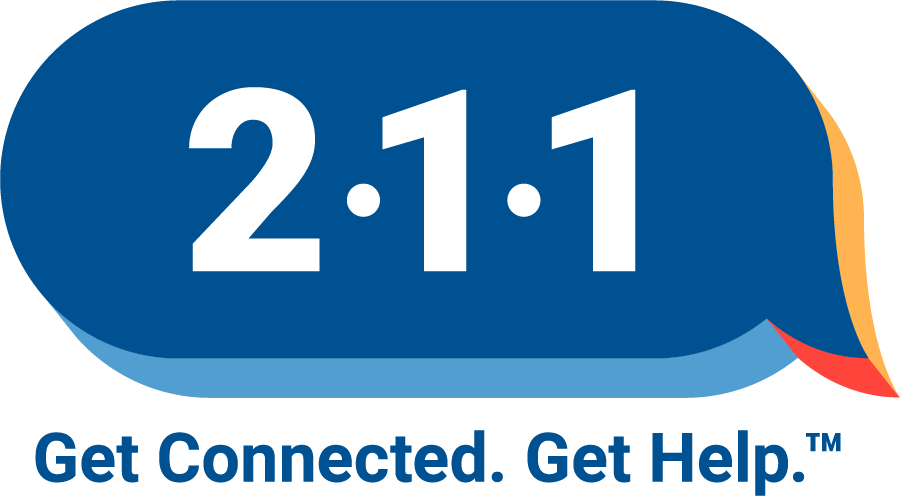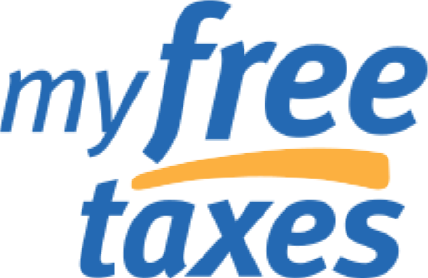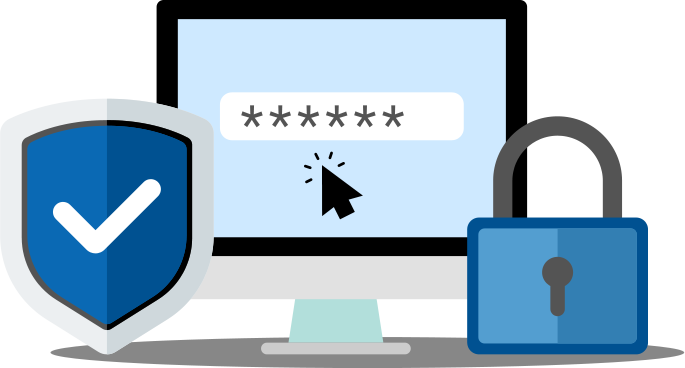A Mirage Too Often

Low-Cost Broadband: A Good Deal, If You Can Get It
Read time: 6 minutes
Broadband (high-speed internet) access is a necessity for participating in modern life, to seeking and maintaining employment, getting an education, managing health and finances. That is why California’s United Ways work to help low-income families get broadband at home.
Yet as we wrote in the prior post, 12 million Californians either are unconnected or under-connected. In this post we focus on the availability of broadband subscriptions affordable to low-income households, including many of those millions of unconnected households.

Affordable Broadband Plans from Commercial Carriers
When we began our work to increase broadband adoption, affordable broadband options were non-existent. No major carriers offered plans at $10–15 per month. Beginning in 2014 with the launch of Comcast’s Internet Essentials program, followed by companies such as AT&T, Charter and Frontier, among others, commercial cable and telephone companies have launched affordable broadband programs for low-income families, usually because the Federal Communications Commission (FCC) required them as a condition to approving a merger or acquisition.
These “affordable broadband plans” are a good start, so far as they go, but they are not available everywhere, and present consumers with uncertain service areas, conflicting eligibility rules, overly bureaucratic application processes and other challenges to actually securing a low-cost plan, as we describe below.
- The internet service providers (ISPs) offering affordable plans to low-income households in Califorrnia are cable companies Comcast, Spectrum and Cox, and telephone wired and wireless companies Frontier, AT&T, and soon T-Mobile
- Eligibility requirements vary from one provider to the next, so a consumer may be eligible for one of the low-cost programs, but their basis for eligibility (e.g., child receiving free and reduced price lunch program) is not acceptable to the carrier that serves the consumers address (and recall that most consumers have limited choice of providers depending on where they live)
- Some Internet Service Providers (ISPs) only have their applications available online, while others have the option to print and mail in the application
- Consumers must have eligibility documents with them at the time of applying (Eligibility documents must have consumer’s name, address, and expiration date or dates of eligibility within the last 12 months)
- The process to get approval and schedule installation can take 2–4 weeks or more
- If a consumer is already a customer of the provider, they are ineligible to receive the lower-cost plan without closing their existing account and going without service for 30 days or more, a needless and impractical barrier that prevents many low-income households from accessing affordable plans
– For example, we worked with a single mother whose child relied on having access to home internet service so he could be monitored for a heart condition, but the carrier that served her address be denied service because that parent couldn’t disconnect for 30 days in order to become eligible for the low-cost service. Despite our best efforts to advocate for her, the carrier would not make an exception, that single mother had to continue paying $90 a month for a service she could have received for $20 because there were no other internet providers serving where she lived. - Companies often “upsell” customers during or prior to installation, typically by telling customers that the speed of the affordable plan will not be sufficient for their needs
- Too often, after going through the process to get approved for an affordable plan and schedule installation, providers cannot actually deliver the broadband service to the consumer’s specific address, which the consumer learns only during the installation visit.
Once consumers have navigated these challenges, for too many the affordable broadband service they receive is inadequate. The majority of low-income internet plans only provide speeds of 10–15 Mbps. With the COVID pandemic, two providers increased their speeds, after years of claiming that 10–15 Mbps was more than enough; Comcast increased speeds to 25 Mbps, then to 50 Mbps, and AT&T increased speeds on its affordable plans to 25 Mbps, provided their cables support those speeds, so they are not available to all customers.
The Affordable Connectivity Program
Thankfully, there is a new federal program, the Affordable Connectivity Program that will provide a discount of up to $30 per month toward broadband discount of up to $30 per month toward internet service for eligible households and up to $75 per month for households on qualifying Tribal lands. Eligible households can also receive a one-time discount of up to $100 to purchase a laptop, desktop computer, or tablet from participating providers if they contribute more than $10 and less than $50 toward the purchase price. The program is limited to one monthly service discount and one device discount per household.
A household is eligible if a member of the household meets at least one of the criteria below:
- Has an income that is at or below 200% of the federal poverty guidelines; or
- Participates in certain assistance programs, such as SNAP, Medicaid, Federal Public Housing Assistance, SSI, WIC, or Lifeline;
- Participates in Tribal-specific programs, such as Bureau of Indian Affairs General Assistance, Tribal TANF, or Food Distribution Program on Indian Reservations;
- Is approved to receive benefits under the free and reduced-price school lunch program or the school breakfast program, including through the USDA Community Eligibility Provision in the 2019–2020, 2020–2021, or 2021–2022 school year;
- Received a Federal Pell Grant during the current award year; or
- Meets the eligibility criteria for a participating provider’s existing low-income program.
Suggestions for Reforming Commercial Low-Cost Broadband Plans
Affordable broadband plans from commercial providers are essential tools, but they could be much better. Here are a few suggested improvements:
- Uniform eligibility: Either align and agree on all eligibility rules, or commit to reciprocity, where the carrier serving a household’s address will match any treat as eligible any household that meets another carrier’s affordable plan.
- Transparency and accountability: Community leaders and public officials seeking to increase broadband adoption are flying blind. Statewide broadband maps and household surveys give a decent sense of the big picture, but they do not enable communities to track progress. Companies currently are not required to report statistics on the number of likely eligible households and the rate of subscription to affordable programs, either at the state or local level. California should require such reporting and set up a clearinghouse to bring together and analyze data across all providers, and make it available to support broadband outreach and enrollment.
- Invite community partners inside: Allow nonprofits, schools and local government to certify a household is eligible for a provider’s plan, and even order and track installation of an affordable plan (we can track UPS packages and pizza deliveries, with appropriate protections the same should be possible for broadband enrollment)
We should make all the improvements listed above, but we also should look further. To be frank, as important as they are, these commercial programs on their own will never make home broadband as ubiquitous as it should be. After ten years of Comcast Internet Essentials, for example, the longest-running and perhaps most successful of these programs now serves 10 million people, about 2.5 million households, that is only about a third of the total number of eligible households.



